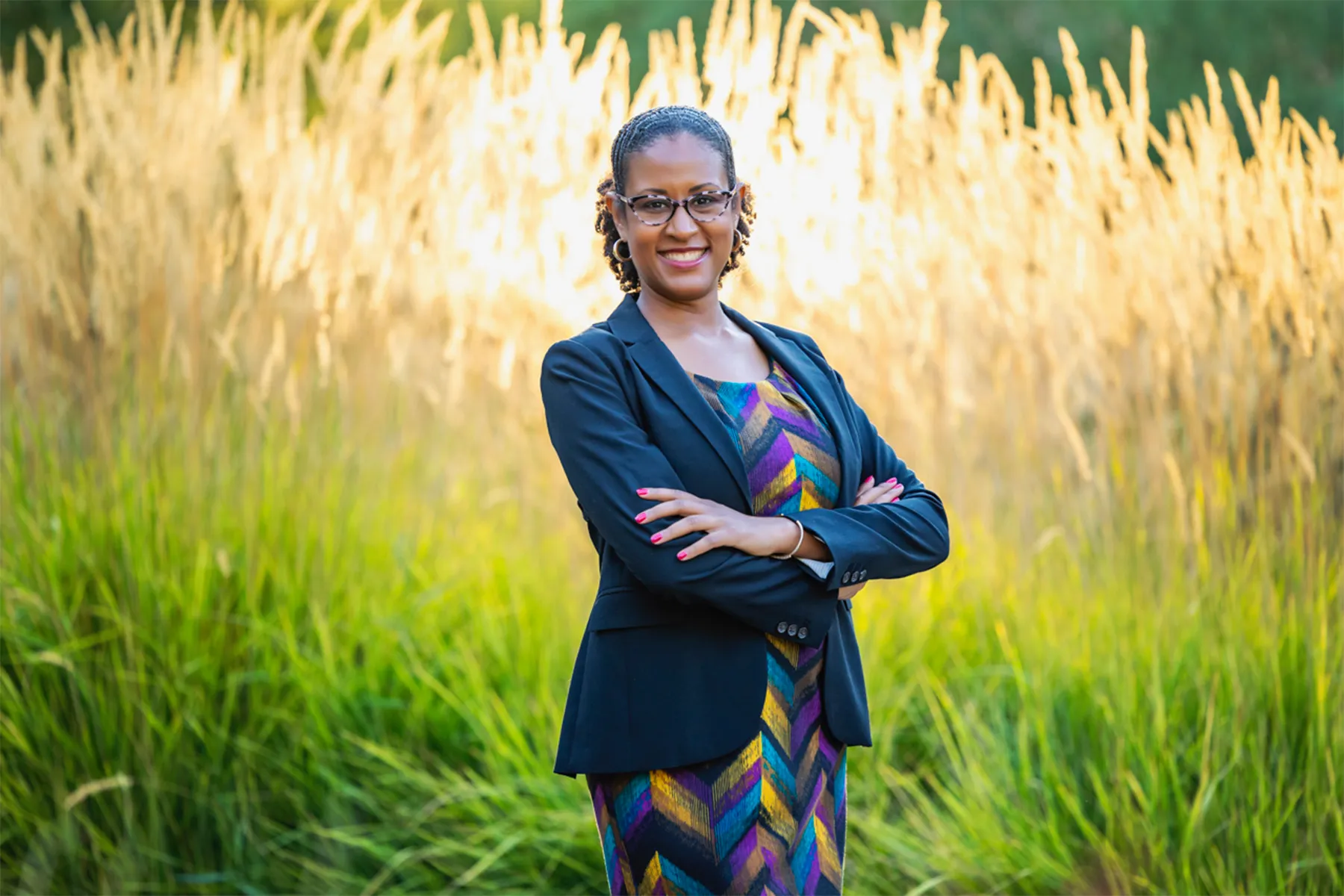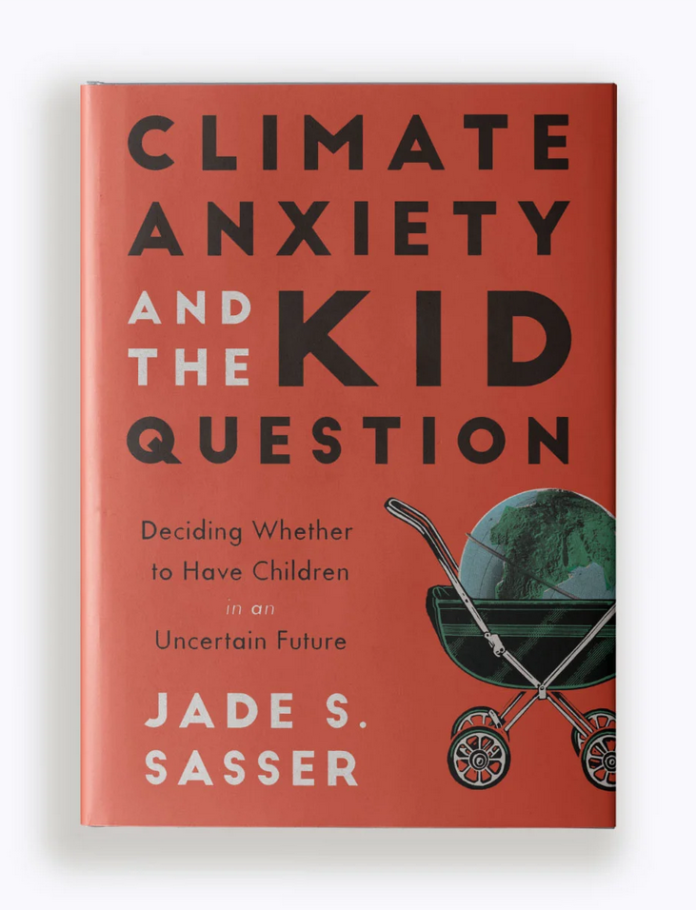By Jessica Kutz/Originally published by The 19th
Jade Sasser, an associate professor of gender and sexuality studies at the University of California, Irvine, was already deep into researching her latest book, “Climate Anxiety and the Kid Question,” when she posed its central dilemma to her students: How were their feelings about climate change affecting their plans to have children?
To her surprise, the classroom erupted. Students spontaneously yelled out some of their fears:
“What are we supposed to do?”
“Why do we try to do anything?”
“Nothing is gonna work out for us!”
“I completely lost control of the room,” Sasser said. “They melted down.”
Her students were worried about not being able to find stable, long-term jobs, or afford houses, much less have enough money to provide for children. “And on top of that, we are scared to death that this planet isn’t going to be here 20 or 30 years from now,” Sasser recalls them telling her.
UC Irvine is a Hispanic-serving institution located in a city where 55 percent of the population is Latinx, and many of Sasser’s students are from low-income, immigrant backgrounds. They made up a demographic that Sasser, who is Black, hadn’t seen featured in the mainstream debate over whether to have children in a world that feels doomed by the climate crisis. That moment in class was pivotal for Sasser’s understanding of how the younger generation views having children in such uncertain times. “What had prior to that time just been about getting research data, it now became a real crisis that the people in the room with me were living out in their own lives. And I had not seen it that way before,” she said.
In the dozens of articles and books she had read, the topic was mostly being presented by White women, grappling with the carbon footprints their children might create, or the feelings of an existential threat to their families. “I thought, ‘What’s going on here?’” Sasser said. “Because the picture that was being painted in these newspaper articles and studies that I was reading was a very, very narrow one, focused largely on people from pretty privileged backgrounds.”
Sasser’s book, which was published April 9, is a response to this homogeneity in the literature. She uses race as a lens through which to better understand climate anxiety and how people make decisions about childbearing, bringing much-needed nuance and historical context to the debate. As Sasser writes, “It adds a dimension to the multifaceted fight for justice by revealing the ways the unjust systems causing climate change have pervaded not only our environments and communities but our minds, hearts, and deepest desires around children and family.”
Sasser’s new book builds on the one she published in 2019, “On Infertile Ground: Population Control and Women’s Rights in the Era of Climate Change.” In it, she detailed how a woman’s decision to have children became intertwined with both the environmental movement and racist population control programs.
Historically, for White women, reproduction has been encouraged, but that has not always been the case for women of color. In the United States, starting in the early 1900s, sterilization legislation aimed at “purifying” the White race targeted Black women in North Carolina, Latina women in California and women with disabilities, among others. Then in the 1970s, especially after “The Population Bomb” was published in 1968 and painted a future of famine and environmental degradation, NGOS began to focus on overpopulation as the number one environmental threat. They worked on curtailing women’s reproduction in places like India and the African continent through programs that promoted family planning and the use of contraceptives to slow population growth. Meanwhile in the U.S., some women were making bold proclamations about deciding to remain childless for environmental reasons.

(Courtesy of Jade Sasser)
“We have to start with that historical moment,” Sasser said in an interview with The 19th. “The idea that taking a public stance and saying, ‘I’m not going to have children until my government leaders make the appropriate changes to effectively address climate change’ — a Black woman in the United States can’t do that as effectively in the way that a White woman can because of the history of population control.”
Her book also inverts a question that is central to many other texts: What burden might my future offspring place on an already overwhelmed planet? Instead, it asks: How will the unequal burden of the climate crisis affect my future offspring? Threats like wildfire smoke, heat, air pollution and hurricanes have all been linked to poor birth outcomes, including an increase in preterm births and low birth weights, which can lead to problems that can follow children into adulthood, like higher rates of asthma. All these outcomes fall disproportionately on communities of color.
“That particular [point of], ‘I don’t want my child to suffer’ is a very different reason to not have a child than to say, ‘I don’t want my child to contribute to the impact on a planet overall,’’’ said Sarah Jaquette Ray, author of “A Field Guide to Climate Anxiety: How to Keep Your Cool on a Warming Planet.”
“The existential severity and the kind of immediacy of that is the power of that argument,” Ray said.
As Ray points out, Sasser’s book reminds readers that environmental threats have been a problem for marginalized groups for centuries. “For Indigenous peoples, the climate has been changing, and climate trauma has been ongoing for hundreds of years. So this notion that you would stop reproducing in the face of trauma seems ridiculous in that context,” said Ray. “I think Jade’s book helps us make sure that we are really clear eyed about these racial injustice dimensions.”
In Sasser’s book, readers meet many young people who are choosing not to reproduce because of their fears of how the climate crisis will affect their children. But it is not the only way to engage with a climate threat, Sasser writes. She also speaks with people for whom having a child feels like an act of resilience and a commitment to working for a better world. She quotes one activist, Thelma Young Lutunatabua, who frames it as an act of radical hope: “It is a literal way of having more skin in the game. There is no choice for me but to ensure as many families as possible can safely make it through this rebirth.”
Because very little research has been conducted to understand how climate change is swaying people’s childbearing decisions, Sasser created her own survey — a national sampling of 2,521 individuals. She used a national survey organization to distribute the questions and focused on people ages 22 to 35. She asked what kinds of disasters they were concerned about, how they felt about climate change and how they felt about parenting in a climate crisis. She also asked how climate change affected the number of children they want.
Her main finding? “People of color were more likely than white people to consider climate change in their reproductive planning and want to have fewer children as a result,” she writes. They were also more likely to say they were traumatized by climate change.
A quantitative survey can only say so much about a very personal and individualized decision. So to help readers understand the layers behind these findings, she also interviewed women actively thinking about this choice. A group of Black women she interviewed, for example, told her racism does more to shape how they currently view the world and the threats to their potential children. Climate change, they say, just amplifies and intersects with that fear.
A 38-year-old woman named Victoria tells Sasser bluntly why she doesn’t want to have a child. “Really because the world is just awful and I don’t want to bring anybody into it, I just don’t think it’s fair. Climate change is occurring, but also it’s like the crushing racism and Anti-Blackness of the world is just … yeah, I don’t want to do it.”
For others, the answer isn’t so cut and dried. Sasser interviews Juliana, a 23-year-old Mexican-American woman, who worries about the environment. As a teacher, she also sees how climate change concerns her high school and middle school students. “They are sensitive … very sensitive. I don’t really get into it with them, but I know that they are dealing with constant anxiety,” Juliana tells her. She also says that she experienced racism growing up, which plays into her concerns for her future child’s place in the world. But still she’s certain she wants to have at least one child. “I’m hopeful,” she tells Sasser.
Another woman named Melanie, a Diné woman from the Navajo Nation, speaks about her struggles with whether it is morally OK to have children. “It just seems unfair to bring someone into all of this against their will,” she tells Sasser. But she also doesn’t want to just give up on raising the next generation. “The idea of bringing someone into this world and growing them with compassion and love, and making sure they grow up knowing to stand up for other people and stand up for what’s right, that’s a little glimmer of hope,” Melanie said.
In an interview with The 19th, Julia Craven, a Black journalist who recently wrote about her own fears about having children, said she began to wrestle with the question in 2016, when she was writing about police violence against Black people. “I’ve never thought of it in the context of climate change. I think about it very broadly, personally, as just across the board: Is this the world I want to bring a child into? And more importantly: Is this the type of world that they should be left with?” she said.
For Craven, who has also written about the Black maternal health crisis, climate anxiety just adds to the pile of issues she would have to navigate as a mother — something she always thought she would be. “Me also navigating these racist systems, me also navigating climate change and capitalism, just the stress that places on me,” she said. ”How does that affect my ability to do this very important thing that enables me to be their caretaker?”
Now at New America, a think tank, Craven has started her own project to understand reproductive decisions in the Black community. Like Sasser, she said, when she went in search of data to understand how other Black people were thinking about the kid question, she hit dead ends.
But research like Sasser’s begins to fill in these blanks, said Craven: “I don’t think data validates anecdotal stories, but it does boost them. What they do show us is how widespread a feeling is. Or if it is not widespread at all, [it] just shows us a more comprehensive reality of what is happening in the population.”
Sasser sees her book as merely a starting point: an effort to at least pose the kid question to people who’ve never been asked it before and to present a more nuanced understanding of how climate anxiety is affecting decisions to have children.
But she sees plenty of room for more representation. “Being LGBTQ+ is another aspect of identity that makes people very vulnerable, and that directly impacts this conversation around climate, emotions and reproduction,” she said. “That’s not really an issue that I addressed much in the book. … But I’m bringing it up to say that when we’re talking about marginalized communities, race is just one aspect of marginalization.”
Recent research has shown how LGBTQ+ communities are disproportionately affected by the climate crisis. LGBTQ+ people are nearly twice as likely to be displaced by disaster. They also are more likely to live in poverty, making them more vulnerable to climate events. But no one has really tried to understand how gender identity or sexuality might overlap with climate-related reproductive anxiety in this community, Sasser said. “My main point is when we don’t explore diversity and difference, we create this narrative that everyone’s experience is the same, and nothing could be further from the truth,” said Sasser.
Another theme that is embedded in the interviews — and that bubbled to the surface for her students — is how the housing crisis and economic instability are shaping how Millennials and Gen Z view their apocalyptic inheritance.
“They all felt very disillusioned about the economy, about their job prospects, about their ability to purchase a home and achieve financial and career stability in the future,” she said. “In many ways, they articulated that they feel that older generations have sort of sold them this idea of what kind of future is ahead of them, but life isn’t bearing that out.”
In this book, Sasser tries to move what has long been a private or individual choice into a public discussion — and to make that discussion truly inclusive. Now, she argues, it’s up to readers to center — and simply listen to — those most affected by the climate crisis, in order to fight for a future that is healthy for everyone’s offspring.
“Climate emotions are not individual problems to be solved. They are a normal expected response arising from this collective crisis that we are living in together,” she said. “To address them effectively, we need collective actions. We need to seek collective social and political change.”


































